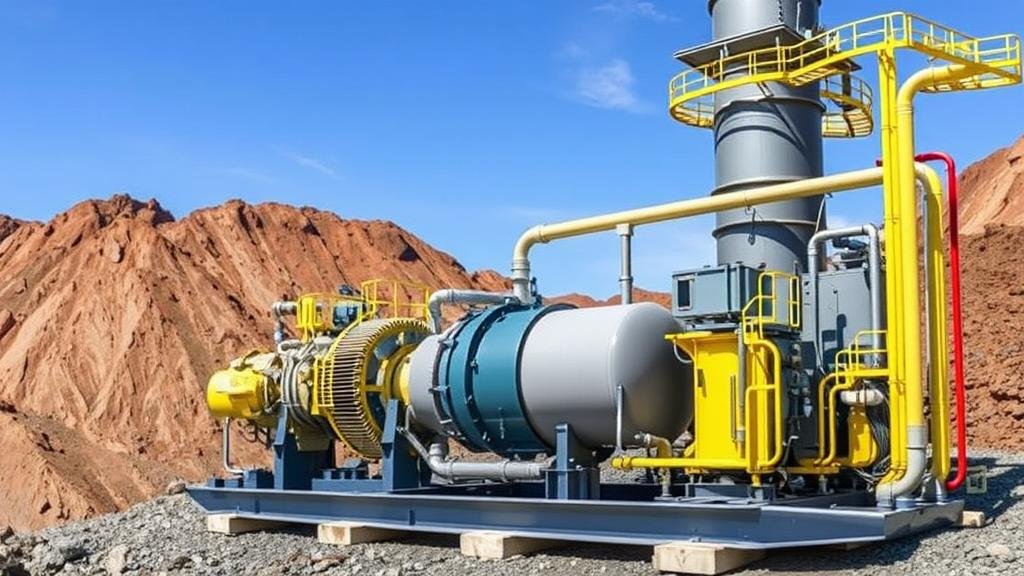Managing Power Needs for Small-Scale Ore Recovery Systems
Managing Power Needs for Small-Scale Ore Recovery Systems
Effective management of power needs is crucial in the operation of small-scale ore recovery systems. These systems often operate in remote locations or smaller sites, where traditional power supply may be limited or unreliable. This article explores power management strategies, technologies, and considerations necessary for optimizing the energy efficiency of these recovery systems.
The Importance of Power Management
Power management plays a significant role in ensuring the sustainability and efficiency of small-scale ore recovery systems. With the rising costs of energy and the environmental impacts associated with fossil fuels, operators must develop strategies that minimize energy consumption and maximize output. For example, in regions where electricity supply is intermittent, unplanned downtimes can halt production and lead to increased operational costs.
Understanding Energy Requirements
To efficiently manage power needs, its essential to first understand the energy requirements of various components in an ore recovery system. Factors influencing these requirements include:
- Type of Ore: Different ores require varying levels of processing energy. For example, hard rock mining typically demands more energy than alluvial mining.
- Recovery Methods: Methods such as gravity separation, flotation, or leaching each have distinct energy profiles. For example, flotation processes often require more power due to aeration and agitation needs.
- Operational Scale: The size of the recovery operation directly impacts power requirements; larger operations may benefit from economies of scale in energy consumption.
Renewable Energy Solutions
One effective strategy for managing power needs in small-scale ore recovery systems is the integration of renewable energy sources. This not only reduces dependency on fossil fuels but can also lead to cost savings in the long run. Commonly implemented renewable energy solutions include:
- Solar Power: Photovoltaic systems can be installed to provide power for lighting, controls, and small machinery. For example, a small-scale gold mine in South Africa successfully implemented solar energy, reducing its reliance on diesel generators.
- Wind Energy: In areas with consistent wind patterns, small wind turbines can complement energy supply, particularly during peak production times.
- Micro-hydro Systems: If water resources are available, micro-hydro systems can sustainably generate electricity through water flow, providing a continuous power source.
Energy Storage Technologies
Energy storage technologies are crucial in managing fluctuations in energy generation and demand, making them indispensable for small-scale ore recovery systems. Options include:
- Batteries: Lithium-ion and lead-acid batteries can store excess energy generated during peak production periods, releasing power during high demand.
- Flywheel Energy Storage: This technology provides rapid bursts of power and can balance loads during peak times, contributing to smooth operational continuity.
Monitoring and Optimization
Useing a robust monitoring system enables operators to track real-time energy consumption and identify inefficiencies. Solutions for energy monitoring include:
- Smart Meters: These devices provide detailed insights into energy usage patterns, enabling better decision-making.
- Data Analytics: Utilizing software tools for predictive analytics can help in forecasting power needs and adjusting operational parameters to match energy availability.
Case Studies and Real-World Applications
Several small-scale mining operations have successfully managed their power needs through innovative strategies:
- Case Study 1: A small companys gold mining project in Ghana integrated solar panels with an energy-efficient milling process, resulting in a 40% reduction in fuel costs and increased daily output.
- Case Study 2: In Chile, a copper mining operation utilized an energy storage system that allowed it to store energy during low-demand hours, enabling the site to function more efficiently and reduce operational costs by 25%.
Conclusion
Managing power needs for small-scale ore recovery systems is an intricate yet essential task that can lead to significant operational improvements and cost savings. By understanding energy requirements, leveraging renewable energy solutions, employing energy storage technologies, and monitoring usage, operators can ensure a more sustainable approach to their mining activities. As the industry evolves, it becomes increasingly important for small-scale operators to adopt efficient energy management practices to remain competitive in a rapidly changing landscape.
Actionable Takeaways
- Assess the specific energy needs of your recovery system regularly.
- Consider integrating renewable energy sources to decrease reliance on traditional power supplies.
- Invest in monitoring technologies to gain insights into your energy consumption patterns.
- Explore energy storage options to enhance reliability and operational efficiency.



